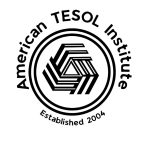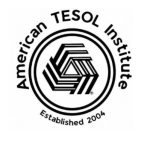Presenting information effectively is a critical skill for TESOL teachers, whether in the classroom, at a professional development conference, or during training sessions. Outstanding presentations not only captivate the audience but also facilitate learning, engagement, and retention. Here are some essential strategies to help TESOL teachers prepare and deliver exceptional presentations.
1. Know Your Audience
Understanding your audience is the foundation of a great presentation. Are you speaking to fellow TESOL educators, language learners, or school administrators? Tailor your content, language, and examples to meet their interests, proficiency levels, and expectations.
Pro Tip: Use pre-presentation surveys or informal chats to learn about their needs, interests, and challenges.
2. Start with Clear Objectives
Define what you want your audience to learn or take away from your presentation. Clear objectives keep your content focused and relevant. For example, your goal might be to demonstrate innovative teaching techniques or provide insights into effective classroom management strategies.
Pro Tip: Share your objectives at the beginning of your presentation to align expectations.
3. Structure Your Presentation
A well-organized presentation is easier to follow and more engaging. Use the following structure:
- Introduction: Capture attention with a story, statistic, or question. Outline your objectives.
- Main Content: Break down key points into sections. Use visuals, examples, and activities to reinforce learning.
- Conclusion: Summarize your points, revisit your objectives, and end with a call to action or inspiring takeaway.
4. Use Visual Aids Effectively
Visuals are powerful tools to enhance understanding and retention. Use slides, images, charts, and videos to complement your spoken content. However, avoid overloading your slides with text. Instead, focus on key points and visuals that illustrate your message.
Pro Tip: Use design tools like Canva or PowerPoint templates to create professional and visually appealing slides.
5. Incorporate Interactive Elements
Engage your audience by making your presentation interactive. Activities such as group discussions, quizzes, polls, and role-playing keep participants actively involved.
Ideas for TESOL Teachers:
- Use platforms like Kahoot! for real-time quizzes.
- Include think-pair-share activities to encourage collaboration.
- Demonstrate a teaching technique and ask for feedback.
6. Rehearse and Seek Feedback
Practice your presentation multiple times to refine your timing, delivery, and transitions. Rehearse in front of a trusted colleague or record yourself to identify areas for improvement.
Pro Tip: Use feedback to make adjustments that enhance clarity and engagement.
7. Focus on Delivery Skills
Outstanding presentations are as much about delivery as they are about content. Keep these tips in mind:
- Body Language: Use open gestures, maintain eye contact, and move naturally.
- Voice: Speak clearly and vary your tone to emphasize key points.
- Pace: Avoid speaking too quickly or slowly. Allow time for audience reflection.
8. Anticipate Questions and Challenges
Prepare for potential questions or challenges that may arise during your presentation. Anticipating these helps you respond confidently and keep the discussion on track.
Pro Tip: Include a Q&A session at the end to address audience queries and encourage dialogue.
9. Provide Takeaways
Ensure your audience leaves with actionable insights or resources. Handouts, slides, or links to further reading can reinforce your message and help participants apply what they’ve learned.
Ideas for TESOL Teachers:
- Share lesson plan templates or teaching tools.
- Provide links to research articles or videos.
- Offer a summary of your key points in a downloadable format.
10. Reflect and Improve
After your presentation, take time to reflect on what went well and areas for improvement. Ask for feedback from your audience and use it to enhance future presentations.
Final Thoughts
Creating outstanding presentations is an art that TESOL teachers can master with preparation and practice. By understanding your audience, structuring your content effectively, and focusing on engaging delivery, you can inspire, inform, and elevate your teaching community.
Whether you’re presenting in a classroom, at a conference, or during a webinar, the effort you put into preparation will shine through. Start planning your next presentation today and make it unforgettable!
Would you like additional resources for presentation tools or techniques? Let us know, and we’ll guide you to success!



